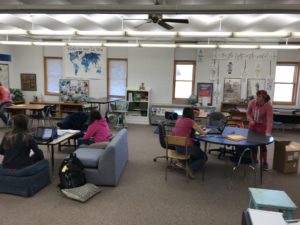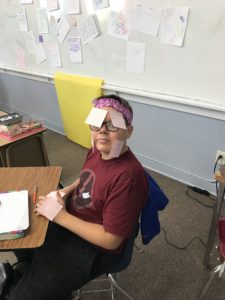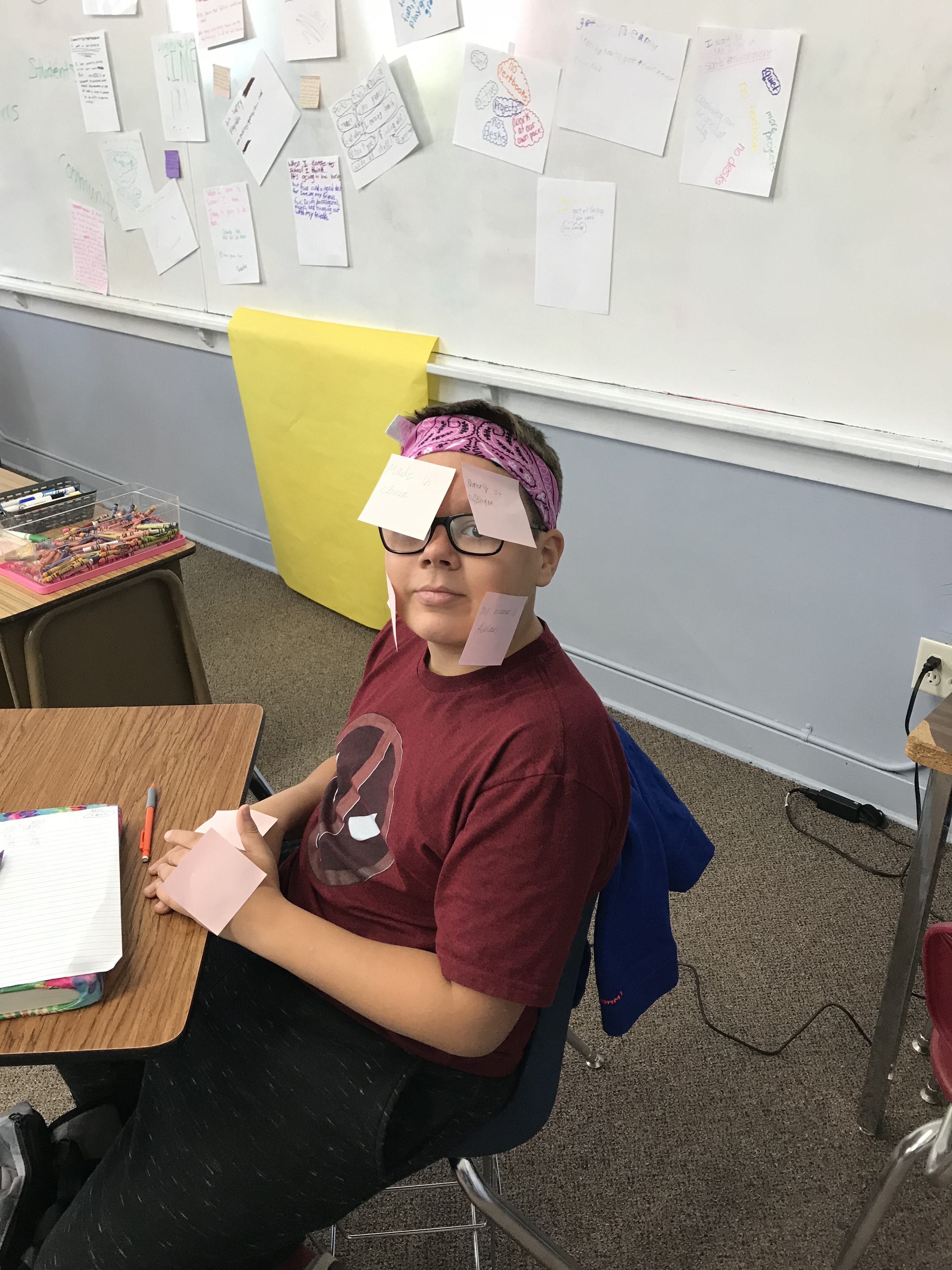What does education innovation mean in a small, rural town in the vast ranch and farm lands of western North America? What are the goals and objectives of families in these areas? Are they the same or different from families in urban and suburban America? Specifically, if the reason we should be transforming school is to prepare our students for jobs of the future, but families in these areas want their children to stay nearby, do they care about fancy new maker spaces and STEM programs? How do tiny districts cope with dwindling student populations and a shortage of teachers who want to come live in a place like Edgemont, where I was today, in the southwestern corner of South Dakota, utterly beautiful on this clear fall day, but perhaps less to an outsider’s liking when winter sets in?
I spent several hours with Amy Ferley, the young superintendent of Edgemont School, a K-12 school/district with about 160 students. She is a forward-looking educator, as are most of her 15 teachers, learning all they can about, and testing, a more flexible, personalized learning experience. The school is largely white, very rural, about half the students qualify for free/reduced lunch, and about a third have identified special needs.
 Honestly, if I had walked into the halls with no background, I could have assumed that I was in a small, progressive, private school with plenty of classroom space and an enrollment challenge. Many of the classes had 6-12 students; many of the rooms were an array of desks, easy chairs, and open space. Most teachers wear multiple hats: the Spanish teacher also teaches English and the arts teachers has a special ed load.
Honestly, if I had walked into the halls with no background, I could have assumed that I was in a small, progressive, private school with plenty of classroom space and an enrollment challenge. Many of the classes had 6-12 students; many of the rooms were an array of desks, easy chairs, and open space. Most teachers wear multiple hats: the Spanish teacher also teaches English and the arts teachers has a special ed load.
I rarely see something really new after visiting so many schools. But one classroom we visited had math students towards the front and “study hall” students working independently in the back. The teacher only lectures about 10 minutes a period, so her math students are working away independently or in groups, asking for help as they need it, and the study hall kids, rather than being in a room down the hall with a baby sitter that such a small school can’t afford, are in a classroom where they can get help if they need it as well. And if they want to check out of this room and go hang out with an English or Social Studies teacher because that is what they are working on, they are free to do so.
 And in the middle school “technology” course, the first year teacher was introducing her students to “systems thinking” by having them brainstorm “what school might be”, as a precursor to design and innovative uses of technology. I have never seen students with faces covered in post it notes!
And in the middle school “technology” course, the first year teacher was introducing her students to “systems thinking” by having them brainstorm “what school might be”, as a precursor to design and innovative uses of technology. I have never seen students with faces covered in post it notes!
Yes, these small rural schools have some unique challenges, but those challenges are not going to go away; they are part of the education evolution. Many of these small districts face common challenges, and each should not have to reinvent the wheel. How can they attract more students? What happens when adjacent towns market to each others’ families? What will attract families to make the extra drive? Can every small district count on the same kind of incredible community support that Edgemont received when they need to build a new athletic field? I look forward to potentially working with a cohort of small districts to brainstorm some design challenges for forward success.













Thank you for writing this to bring attention to May hometown. Although I graduated when it was a “boom” town of 2000 or more we thought graduating with 17 was small. We had started with 60 in our clas & only went to school 1/2 days because there wasn’t enough space. They then built the little schoolhouse, between the current middle school & armory, has been since torn down, where we had two rooms for grades 1-3. Boy, do things change in 50+ years. Manual typewriters were the most up to date technology we had. I hope & pray each year our school has enough teacher & kids to keep it going. I know they have Many challenges but always seem to keep hanging because the community comes together to hold it there. Also, the Alumni have helped in giving much support to the schools needs.
Thanks so much for your comments. Nita! I hope that with the support of your community, and a willingness to innovate and support your superintendent, the school will be around and thrive for a long time!